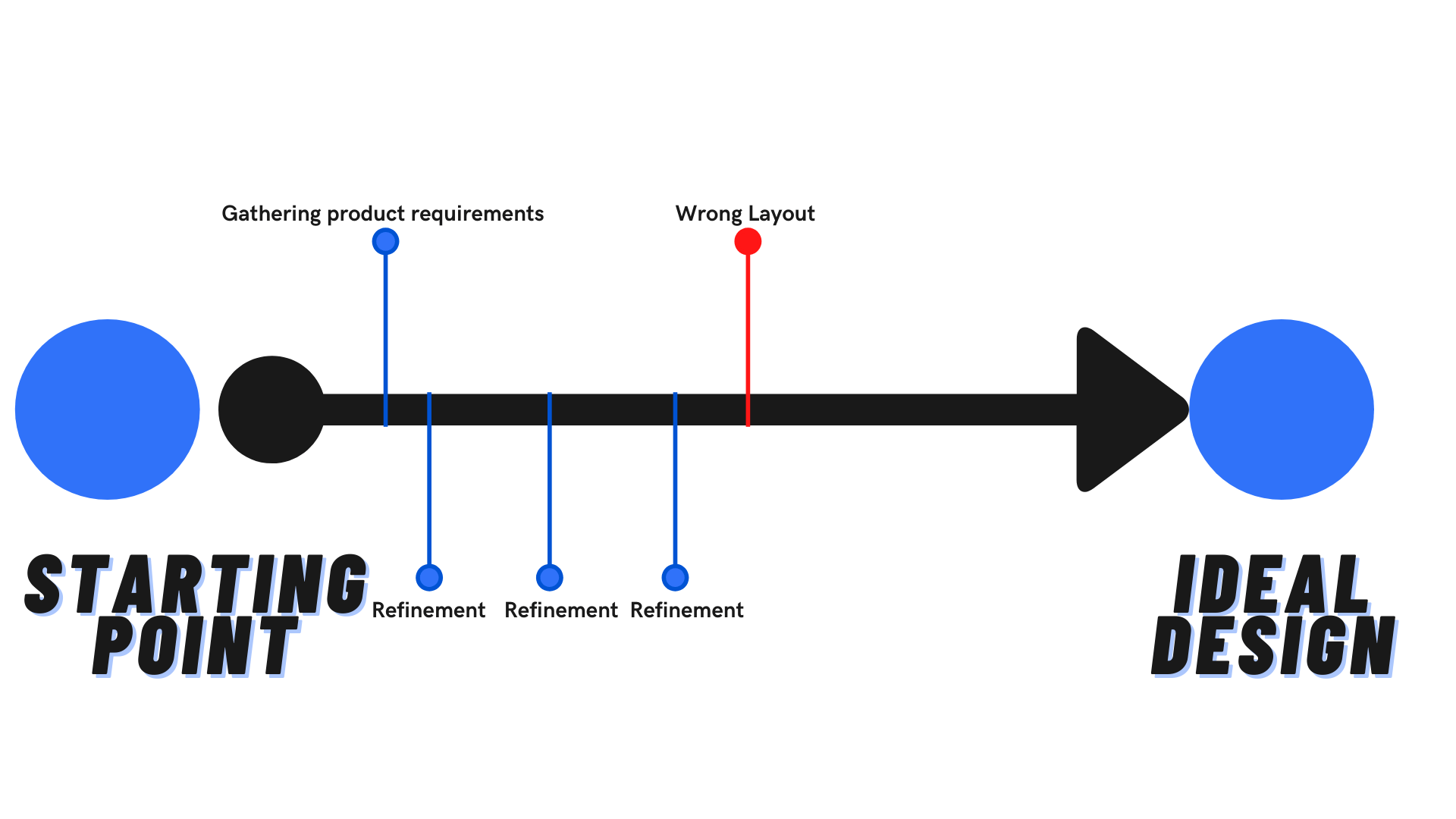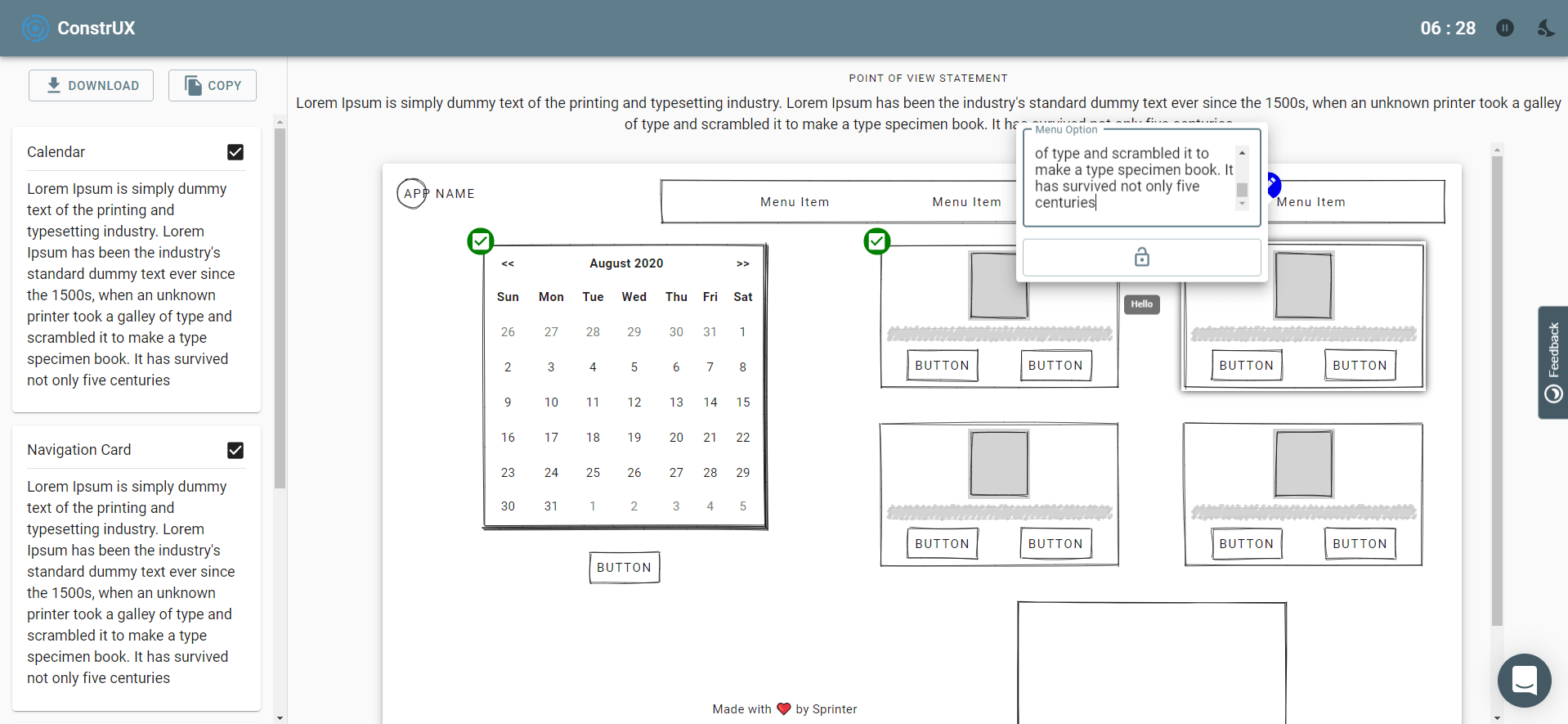The Problem with Anchoring Early to a Design Layout
This is why you should never anchor early to a design layout.
3 min read
Mitchell Pousson II / August 05, 2020
Idea. Product. Market. Money.
If only it was this easy.
Unfortunately, a good idea doesn't turn into a great product overnight.
It takes a team effort to navigate through all the ins and outs of an idea in the hopes of eventually arriving at a marketable and finished product.
But first things first, how do we create an original product without becoming married to a design template?
In a typical workshop setting, designers create rough mockups of the product using design tools.
These mockups are usually a more refined version of the wireframe or template the designer selects based on the perceived product requirements.
The problem being that traditional design tools fall short because the product's functionality is dependent on the design and the design is dependent on the creator and their tools.
What can be shown in oil paintings is very different than what can be show in pencil, and what can be written on paper is very different than what can be displayed in a PowerPoint.
The point being—the medium matters.
Wireframes at any level of fidelity anchor designers to a given layout or UI & UX design—often thrown together using whatever tools and templates are handy at the time under the preface that “we’ll think about design later.”
Unfortunately, these thrown together templates end up looking more similar to the final product than you’d expect.
This has to do with the fact that our perception is forever warped by the design used to communicate the inceptive requirements.
Thus, marrying the future product to the initial and supposedly temporary design template.
And all the refinements in the world won’t fix a design that’s subconsciously anchored to the wrong layout.

So how do we solve this problem?
You can’t have a first impression twice.
That's why it's important to protect yours and learn from it.
ConstrUX—the new product requirement gathering tool we are building—allows users to capture their initial ideas for the product without becoming anchored to a single design.
Since the exercise is brief and the design layout isn't saved, our tool allows participants to continuously have new first impressions that develop into valuable, key insights.

By using one exercise that deploys various design layouts, we empower participants to communicate their creativity on a level playing field while simultaneously avoiding the anchored and inherent bias of a single template.
In this way, we are anchoring to such a wide range that there’s really no anchoring at all.
And because of the impermanence of the layouts, their dynamic nature, and only the extracted requirements persisting beyond the exercise, the product can be designed to best fit the requirements, rather than the requirements being tailored to fit a poorly crafted design.
The process is very similar to cooking pasta.
Extracting the ideas is like pouring the noodles out of the box.
Cooking them is doing the ConstrUX exercises.
And the final product being the cooked noodles that are ready to be turned into a gourmet dish by the chef (designer).
The purpose of this exercise is to prepare the raw materials without limiting the dishes they could be used to create.
Like pouring pasta into a strainer, sometimes the only way to get it out of the pot is to smack it a few times until the rigidity formed by the wedged chunks breaks down from the jarring shocks and the pieces come pouring out.
If the ideas (noodles) are extracted early enough in the process, then dinner usually turns out Bon Appétit.
But if you leave em' on just a little too long (get too attached to the idea or design), then typically the “al dente” pasta dish gets mushy and loses taste.
Any longer and they’ll become so stuck that intact extraction becomes impossible and it’s time to call Uber eats.
Fortunately like pasta, ideas are everywhere and super cheap—so replacing them is easy.
This is how we help ordinary people build extraordinary products.